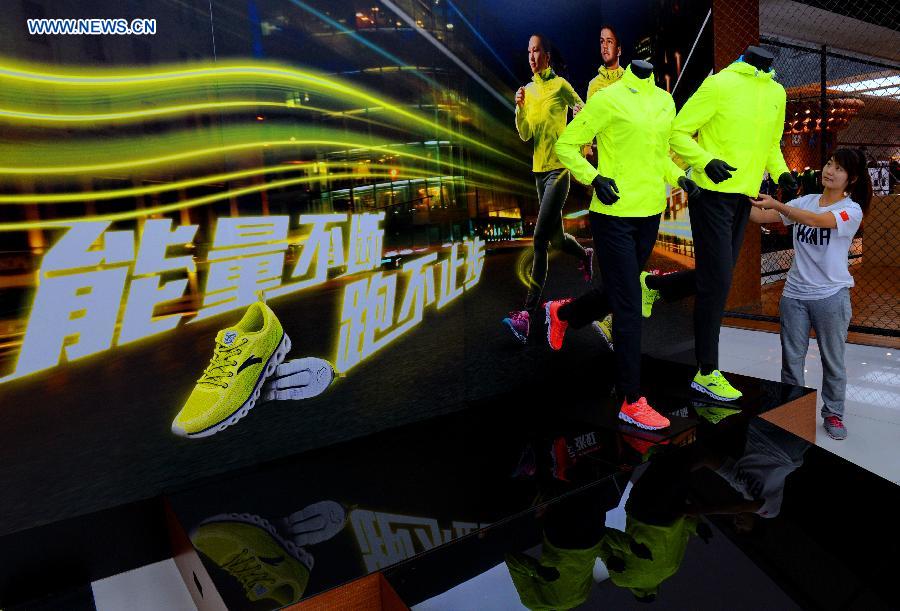
China has consolidated its position as a powerhouse in the global sportswear market, driven by a growing middle class, increasing health consciousness, and government initiatives. The global sportswear market, valued at approximately $400 billion in 2023, is projected to reach over $600 billion by 2030, at a CAGR of around 5 to 6 per cent. Given this scenario, China is a crucial growth driver, with its market size reaching approximately 1.4 trillion yen (around $200 billion) in 2023. Global leaders like Nike and Adidas have long held significant market share, but domestic brands like Anta and Bosideng are rapidly closing the gap, leveraging unique strategies and deep market understanding.
China's domestic sportswear market dynamics
Despite global economic uncertainties, China's apparel sector, particularly sportswear, has shown remarkable resilience. The 2025 IMD China Company Transformation Indicator (CCTI) rankings highlight key success factors as: business robustness (BR), early innovation results (EI), and R&D efforts (RD).
In 2023, total retail sales of China's garments, footwear, hats, and textiles sector grew by 12.9 per cent year-on-year, reaching yen 1.4 trillion. Sportswear and athleisure segments led this growth with rising health consciousness and government initiatives like the Outdoor Sports Industry Development Plan (2022-2025).
However, 2024 witnessed a slowdown due to global economic challenges, geopolitical tensions, and domestic restructuring, impacting the mass market significantly. Then the Chinese government gave stimulus in late 2024 aimed to revitalize growth, with early signs of recovery emerging in 2025.
What has helped it revival is the rising consumer confidence and evolving lifestyle trends; increasing health consciousness and participation in sports; supportive government policies promoting the sports industry; growing demand for athleisure and performance apparel.
Domestic champions rise
Now, Chinese sportswear brands are rapidly gaining market share with their innovations, diversification, and strong digital engagement. For example, domestic brand Anta Sports gained due to its multi-brand strategy and R&D prowess. Anta secured the second spot in the 2025 CCTI rankings, revealing its dominance through a multi-brand strategy, including Fila, Descente, and Kolon Sport. In 2023, Anta 's revenue grew 16.2 per cent to yen 62.4 billion, with significant contributions from the Anta and FilaA brands. The company's strong R&D investments of almost yen 1.61 billion in 2023, have resulted in advancements in high-performance footwear, smart sportswear, and eco-friendly materials, with over 2,300 patents.
Table: ANTA revenue and growth
|
Year/Period |
Revenue (RMB bn) |
Growth (%) |
|
2023 |
62.4 |
16.2 |
|
H1 2024 |
33.735 |
13.8 |
Similarly Bosideng another domestic brand has transitioned into China's leader in premium down apparel, driven by strong customer engagement and a direct-to-consumer model. In 2023-24, revenue increase to yen 23.2 billion, with net profit rising to yen 3.1 billion. The company's R&D efforts, with over 1,193 patents, focus on thermal insulation, lightweight materials, and innovative construction techniques have given it a huge boost.
Global brands adapt
Meanwhile, global brands are navigating the Chinese market with varying degrees of success. Lululemon Athletica saw significant growth in China, rising to fifth place in the 2025 CCTI rankings. The brand reported 67 per cent growth in China in 2023, contributing to its global revenue of $9.6 billion. Lululemon aims to double revenue to $12.5 billion by 2026, targeting the premium activewear segment. However, it has a low ranking in R&D efforts, which is a major area for potential improvement.
Adidas dropped to eighth place in the 2025 rankings, facing challenges in customer engagement amidst intensifying domestic competition. Now the brand has to recalibrate its strategies to maintain competitiveness in China's dynamic market.
Therefore, China's sportswear market expected to continue growing with domestic brands and evolving consumer demands. Companies that prioritize innovation, deepen local engagement, and embed sustainability into their strategies will thrive in this dynamic landscape. While domestic brands gain ground, they must strengthen their market positioning and differentiation. Simultaneously, evolving consumer demands require companies to strengthen digital engagement, localize production innovation, and consider international expansion. The future belongs to companies that master innovation, deepen local engagement, and embed sustainability into their core strategies.












